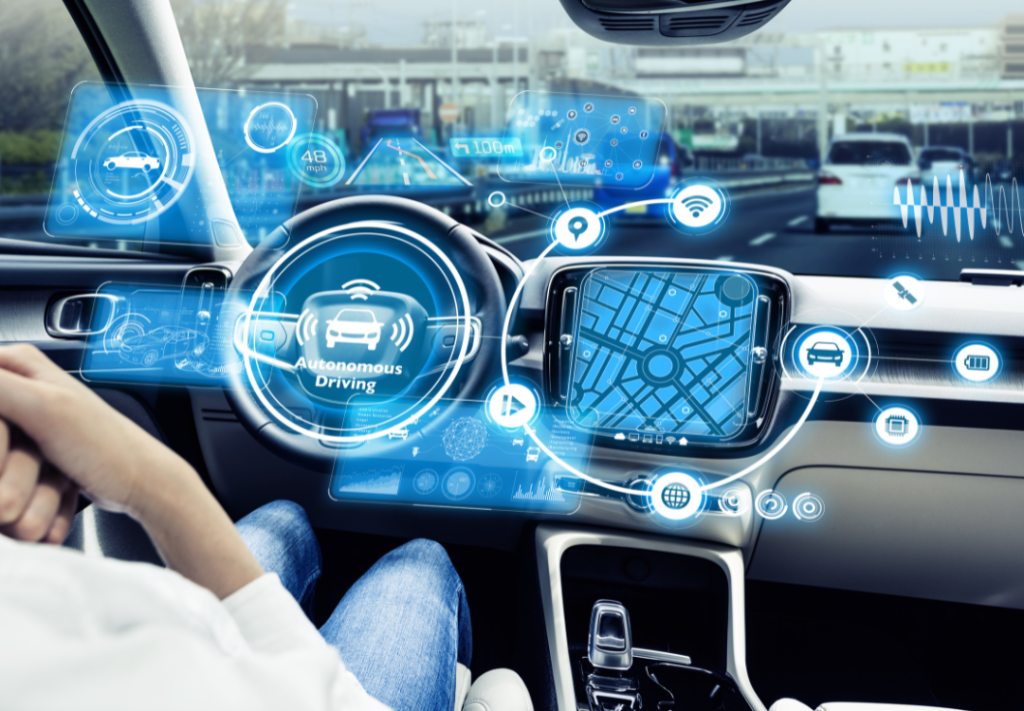The future of transportation is steering towards autonomy, and by 2025, AI-powered smart vehicles will be a common presence on roads worldwide. These autonomous vehicles (AVs) promise to revolutionize how we travel by offering safer, more efficient, and more accessible mobility solutions. Thanks to advances in artificial intelligence, machine learning, and sophisticated sensors, AVs will navigate complex environments, process real-time data, and optimize routes to maximize efficiency and convenience.
A major advantage of AI-driven smart vehicles is their potential to drastically improve road safety. Studies from the National Highway Traffic Safety Administration (NHTSA) reveal that human error accounts for 94% of traffic accidents. By removing the human element, autonomous vehicles can significantly reduce accidents, fatalities, and injuries. Equipped with an array of sensors—including cameras, LiDAR, radar, and GPS—these AI systems will create a comprehensive 360-degree view of their surroundings, detecting pedestrians, cyclists, vehicles, and hazards with exceptional precision, even under adverse weather conditions. The result will be safer, more predictable driving, as AI can respond more quickly and consistently than human drivers.
Beyond safety, AI-powered smart vehicles will transform transportation efficiency. Autonomous cars will communicate with one another and with infrastructure such as traffic signals and road signs to optimize traffic flow and reduce congestion and travel time. This interconnected system will lead to smoother, less stressful commutes. Furthermore, AI will enhance fuel efficiency by adjusting driving behaviors like speed and braking, and optimizing routes based on real-time conditions. With the growing adoption of electric vehicles (EVs), AI will also play a critical role in managing battery health and scheduling charging times, which will help lower emissions and lessen the environmental footprint of transportation.
The impact of autonomous vehicles extends to expanding mobility and accessibility. For individuals who cannot drive—such as the elderly, disabled, or those without licenses—AI-driven smart vehicles promise newfound independence and freedom. Autonomous transport can also address gaps in public transit, particularly in underserved urban areas or rural regions where options are limited. On-demand autonomous rides could become a cost-effective alternative to traditional transportation, improving quality of life for many who currently face mobility challenges.
The market for autonomous vehicles is expanding rapidly. Allied Market Research forecasts the autonomous vehicle industry to reach $556.67 billion by 2026. The widespread adoption of AVs is projected to bring massive economic benefits by lowering accident rates and associated costs. For example, a RAND Corporation study estimates that a mere 10% reduction in road accidents due to autonomous vehicles could save the U.S. economy $250 billion annually. Industry leaders like Tesla, Waymo, and Uber continue to pioneer developments, pushing smart vehicle technology closer to mainstream acceptance.
In summary, AI-driven smart vehicles are poised to transform transportation by 2025. They will make roads safer, enhance fuel efficiency, reduce environmental impact, and broaden access to mobility for millions. As the technology matures, autonomous vehicles will become a cornerstone of the transportation landscape—delivering a future of greater convenience, sustainability, and safety for all travelers.

